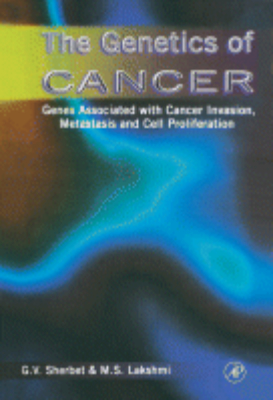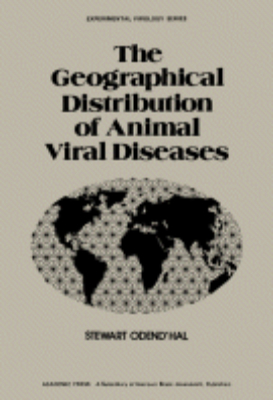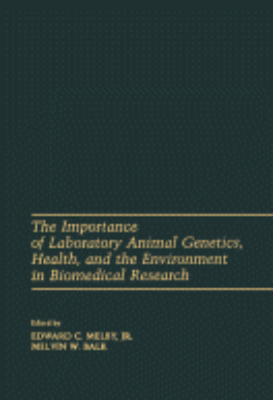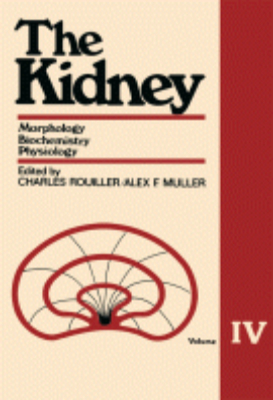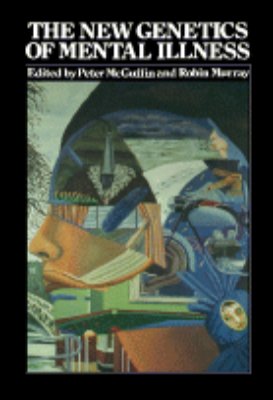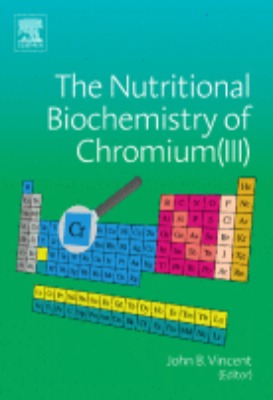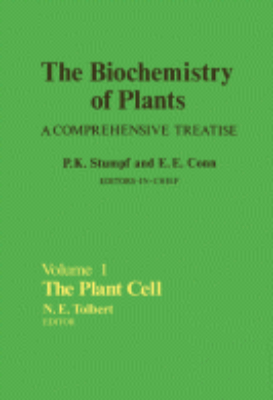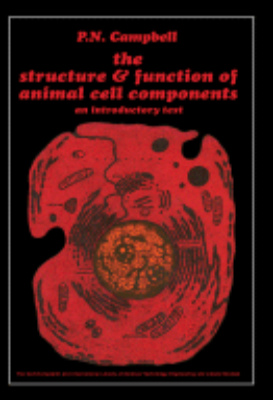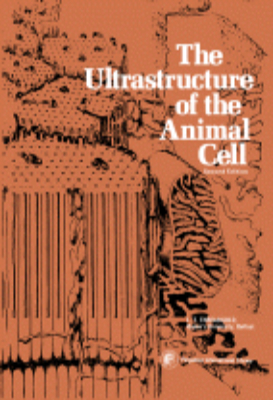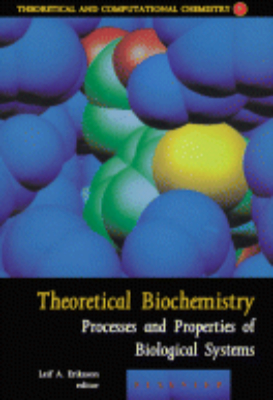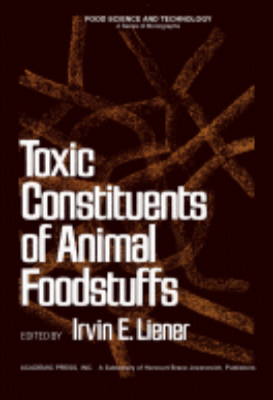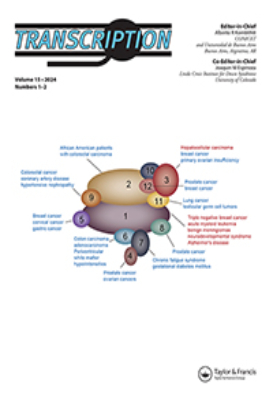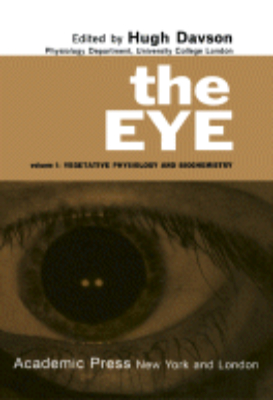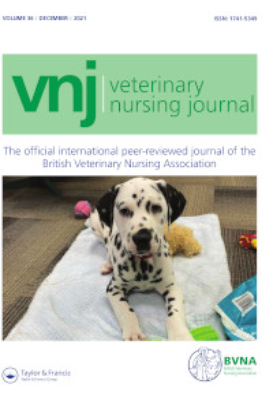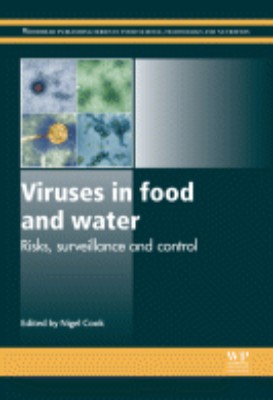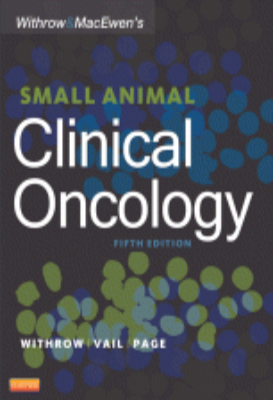Life Science
The Genetics of Cancer
Written by internationally recognized experts, The Genetics of Cancer provides up-to-date information and insight into the genetic basis of cancer and the mechanisms involved in cancer invasion and its secondary spread. This volume presents the deregulation of the cell cycle in tumor development and integrates the function of tumor suppressor genes, oncogenes, and metastasis-associated genes in the pathogenesis and progression of cancer. The Genetics of Cancer will be useful to all graduate students, clinicians, and researchers working in the fields of cancer biology, genetics, and molecular biology.
The Geographical Distribution of Animal Viral Diseases
The Geographical Distribution of Animal Viral Diseases attempts to shed some light on the global distribution of 110 different viral diseases, mainly of livestock and companion animals. The world literature was screened for 110 different viruses, and maps were prepared. These maps delineate the global distribution of pathogenic viruses based on authenticated reports from a variety of reliable sources. Four viruses were categorized as affecting more than one species to a significant degree (astrovirus, rabies, rotaviruses, and Rift Valley fever). The largest number of maps involved viruses that affect humans. Of the 28 viruses a large number were from the California encephalitis group. Ten of the 28 viruses were reported only in the Eastern Hemisphere, 14 only in the Western Hemisphere, and four were worldwide. Birds were the next most frequently affected group with the 15 viruses, followed by pigs with 14 viruses. Overall the vector-borne viruses appear to have much sharper and clear-cut geographical boundaries than the others.
The Importance of Laboratory Animal Genetics Health and the Environment in Biomedical Research
The Importance of Laboratory Animal Genetics, Health, and the Environment in Biomedical Research documents the proceedings of the Fifth Charles River International Symposium on Laboratory Animals, in Heidelberg, Federal Republic of Germany, March 14-16, 1983. These papers examine how the health and genetic monitoring of laboratory animals, coupled with environmental influences, affect the investigations of oncologists, toxicologists, or pharmacologists. The book is organized into four parts. Part I focuses on the health monitoring of laboratory animals for biomedical research. It includes studies on the effects of health and health monitoring in toxicology studies, oncology studies, and pharmacologic studies. Part II deals with the genetic monitoring of laboratory animals. It examines the causes of genetic alternation in laboratory animals and ways to prevent them. Part III considers the environmental monitoring that is necessary for research on laboratory animals. Part IV on new research frontiers includes studies on the production of monoclonal antibodies for the experimental and therapeutic modulation of laboratory animals, and the quality control aspects of animal experimentation.
The Kidney Morphology Biochemistry Physiology
The Kidney: Morphology, Biochemistry, and Physiology, Volume IV covers the developments in the study of renal structure and function, particularly on the subcellular and molecular level. This book is composed of six chapters that consider the correlation of kidney's structure with function, as well as the participation of the kidney in metabolic systems and its relation to other organs. This text discusses topics such as experimental and renal transplantation, the structure and function of the juxtaglomerular apparatus, and the macula densa. Other chapters deal with the gaseous and substrate metabolism of the kidney and the role of this organ in the osmotic concentration and dilution of the urine. The remaining chapters explore hydrogen secretion, potassium and sodium excretion, and the correlation of the kidney with vitamins and parathyroid gland. This book is of value to morphologists, biochemists, physiologists, pathologists, pharmacologists, and clinicians.
The New Genetics of Mental Illness
The New Genetics of Mental Illness is a collection of papers that discusses the advancement of molecular biology in the context of psychiatry. The book presents papers that are organized thematically. The text first discusses the basics of biology and quantitative models, and then proceeds to covering linkage analysis. Next, the book deals with various mental disorders, including schizophrenia, eating disorders, and developmental disorders. The remaining materials turn their attention to dementia and Huntingtons disease. The book will be of great use to researchers and practitioners of behavioral sciences, such as psychology and psychiatry.
The Nutritional Biochemistry of Chromium (III)
Chromium nutritional supplements are the second best selling mineral supplements after calcium as chromium is found in pills, sports drinks, chewing gums, smoothies, and numerous other products. Chromium has been promoted to promote weight loss and muscle development and most recently to be available to treat the symptoms of type 2 diabetes and related conditions. The aim of The Nutritional Biochemistry of Chromium(III) is to examine the four most controversial areas of chromium nutrition and biochemistry: - is chromium an essential element for humans and are chromium nutritional supplements of value - what biochemical role, if any, does chromium play in the body - can large doses of chromium(III) be used to treat symptoms of type 2 diabetes, cardiovascular disease, and related medical conditions - is the use of chromium(III) supplements a health concern. Scientific experts, who are recognized leaders in the field, weigh in with their opinions on both sides of these issues in this book.A background review of the field from 1955-1995 by Vincent opens the book and concludes with a summary by Dr. Forrest Nielsen, Center Director of the USDA's Grand Forks Human Nutrition Research Center concludes the book.
The Plant Cell
The Biochemistry of Plants: A Comprehensive Treatise, Volume I: The Plant Cell serves as an introduction to the various parts of the cell and to the basic biochemistry carried out in the different subcellular components. The book discusses the parts of a cell and the biochemical processes, such as respiration involving the mitochondria, microbodies or cytosol, or photosynthesis in the chloroplasts. The text also describes the use of plant cell cultures in biochemistry; the primary cell walls of flowering plants; and the morphology, purification, chemical and enzymatic composition, and functions of the plasma membrane and the cytosol. The biochemistry of the developmental and genetic processes involved, the development of function, and the biochemistry and metabolism of the mature organelle are also considered. The book further tackles the biochemistry of the plant mitochondria, peroxisomes, glyoxysomes, endoplasmic reticulum, ribosomes, golgi apparatus, plant nucleus, protein bodies, plant vacuoles, and cyanobacteria (blue-green algae). Biochemists, chemists, biologists, botanists, plant pathologists, and students taking related courses will find the book useful.
The Role of Animals in Emerging Viral Diseases
"The Role of Animals in Emerging Viral Diseases presents what is currently known about the role of animals in the emergence or re-emergence of viruses including HIV-AIDS, SARS, Ebola, avian flu, swine flu, and rabies. It presents the structure, genome, and methods of transmission that influence emergence and considers non-viral factors that favor emergence, such as animal domestication, human demography, population growth, human behavior, and land-use changes. When viruses jump species, the result can be catastrophic, causing disease and death in humans and animals. These zoonotic outbreaks reflect several factors, including increased mobility of human populations, changes in demography and environmental changes due to globalization. The threat of new, emerging viruses and the fact that there are no vaccines for the most common zoonotic viruses drive research in the biology and ecology of zoonotic transmission. In this book, specialists in 11 emerging zoonotic viruses present detailed information on each virus's structure, molecular biology, current geographic distribution, and method of transmission. The book discusses the impact of virus emergence by considering the ratio of mortality, morbidity, and asymptomatic infection and assesses methods for predicting, monitoring, mitigating, and controlling viral disease emergence. Key Features. Analyzes the structure, molecular biology, current geographic distribution and methods of transmission of 10 viruses. Provides a clear perspective on how events in wildlife, livestock, and even companion animals have contributed to virus outbreaks and epidemics. Exemplifies the ""one world, one health, one medicine"" approach to emerging disease by examining events in animal populations as precursors to what could affect humans"
The Structure and Function of Animal Cell Components
The Structure and Function of Animal Cell Components: An Introductory Text provides an introduction to the study of animal cells, specifically the structure and function of the cells. To help readers appreciate the discussions, this book first provides an introduction to the physiological and biochemical function of animal cells, which is followed by an introduction to animal cell structure. This text then presents topics on the components of the cells, such as the mitochondria and the nucleus, and processes in the cells, including protein synthesis. This selection will be invaluable to cytologists, anatomists, and pathologists, as well as to readers who have an elementary knowledge of both biochemistry and cytology.
The Ultrastructure of the Animal Cell
The Ultrastructure of the Animal Cell examines the ultrastructure of the animal cell, with emphasis on the chemical, biochemical, and physiological aspects of the cell. Discussions are organized around the interphase cell and cell division and cover topics ranging from the general structure and molecular models of cell membranes to the ultrastructure of the nucleus and the cytosome. Changes in cell ultrastructure during embryogenesis, differentiation, and secretion are also considered. This monograph is divided into nine chapters and opens with an introduction to the principles and techniques of electron microscopy. The next section is about the interphase cell and first presents an overview of the animal cell before proceeding with an analysis of the ultrastructure of the nucleus and the cytosome, paying particular attention to the plasma membrane and associated structures; the hyaloplasm; endoplasmic reticulum; the Golgi complex; and mitochondria. The changes that occur in the ultrastructure of the cell during embryogenesis, differentiation, and secretion are also described. The last section focuses on cell division and the ultrastructure of the dividing cell. This text will be a useful resource for cell biologists, biochemists, and physiologists, as well as students and teachers of biology, biochemistry, and physiology.
Toxic Constituents of Animal Foodstuffs
Toxic Constituents of Animal Foodstuffs focuses on toxic substances that occur naturally as well as those that are deliberately or inadvertently introduced by man in animal foodstuffs. This book gives specific discussions on food contaminants in meat, dairy products, avian and fish eggs, shellfish, fish, and algae. It notes that the naturally occurring toxicants seem to be confined mainly to avian and fish eggs and to certain kinds of shellfish and amphibia. Examples of toxicity due to the introduction of synthetic chemicals may be found in most meat and dairy products. Moreover, special consideration is given to the problem of the carcinogenic nitrosamines in meat products to which nitrites have been added. This reference will convey an increased awareness of the fact that even products of animal origin may prove to be potentially hazardous to health because of certain toxic substances. Consequently, there will be a vital need for their close surveillance in the food chain.
Transgenerational Epigenetics
Transgenerational Epigenetics provides a comprehensive analysis of the inheritance of epigenetic phenomena between generations. Recent research points to the existence of biological phenomena that are controlled not through gene mutations, but rather through reversible and heritable epigenetic processes. Epidemiological studies have suggested that environmental factors may be heritable. In fact, environmental factors often play a role in transgenerational epigenetics, which may have selective or adverse effects on the offspring. This epigenetic information can be transferred through a number of mechanisms including DNA methylation, histone modifications or RNA and the effects can persist for multiple generations. This book examines the evolution of epigenetic inheritance, its expression in animal and plant models, and how human diseases, such as metabolic disorders and cardiovascular diseases, appear to be affected by transgenerational epigenetic inheritance. It discusses clinical interventions in transgenerational epigenetic inheritance that may be on the horizon to help prevent diseases before the offspring are born, or to reduce the severity of diseases at the very earliest stages of development in utero, and current controversies in this area of study, as well as future directions for research.
Vegetative Physiology and Biochemistry
The Eye: Volume 1, Vegetative Physiology and Biochemistry is a compendium of papers that describes the physiology of the eye, particularly its gross anatomy and embryology including its intra-ocular fluids, the intra-ocular pressure, the vitreous body, lens, cornea, and sciera. Several papers review the eyeball, the protective apparatus of the eye, the structure of the tissue in relation to the intra-ocular fluids, and the flow of aqueous humor. Several methods can be used to measure the intra-ocular pressure such as the manometric method and the tonometer. Giles (1959) reports that tonometer measurements in the newborn are within the normal adult range. One paper notes that in man, liquefaction of the vitreous body (the clear jelly-like structure which fills the space between retina and lens,) which is caused by dissolution of the fibrous network, is never repaired. This suggests that new fibers are either not formed or are formed in insufficient amounts. Another paper examines the relationship between pressure in the eye vessels and eye tension. Investigators and researches in the fields of physiology, psychology, ophthalmology, and in all branches of ocular physiology will find the compendium very rewarding.
Viruses in Food and Water
Viruses can be highly infectious and are capable of causing widespread disease outbreaks. The significance of viral pathogens in food and waterborne illness is increasingly being recognised and viruses transferred by these routes are important areas of research. Viruses in food and water reviews the risks, surveillance and control of food and waterborne viral disease.Part one provides an introduction to food and environmental virology. Part two goes on to explore methods of detection, surveillance and risk assessment of viruses in food and water; it includes chapters on molecular detection of viruses in foods and food processing environments, quality control in the analytical laboratory, and quantitative risk assessment for food and waterborne viruses. Part three focuses on virus transmission routes and control of food and water contamination. It contains chapters on fresh produce, shellfish and viral presence, and control methods in waste water and sewage. Finally, part four highlights particular pathogens including norovirus, hepatitis A and emerging zoonotic viruses.Viruses in food and water is a standard reference book for microbiologists in academia, analytical labs and the food and water treatment industries, as well as environmental health professionals and researchers working on foodborne viruses.
Vistas in Botany
Vistas in Botany features the study of life histories of plants, their development from spore or seed through vegetative phases up to the diverse phenomena of reproduction needs. This book is a compilation of studies and research conducted by several botanists that discuss topics such as the taxonomy general principles and Angiosperms; plant biochemistry; causal plant ecology; plant geography; cytology; genes, chromosomes, and evolution; viruses; bacteria; fungi; Bryophyta; Pteridophyta; Gymnospermae; and plant physiology. This publication is valuable to botanical specialists who wish to obtain updated knowledge in botany or phytology, and to students conducting research on the science of plant life.
Withrow and MacEwen’s Small Animal Clinical Oncology
"With a unique focus on the most effective interventional techniques, Withrow & MacEwen's Small Animal Clinical Oncology, 5th Edition tells the full story of cancer in dogs and cats what it is, how to diagnose it, and how to treat many of the most common cancers encountered in clinical practice. Nearly 500 color photographs, diagrams, x-rays, and gross views depict the clinical manifestations of various cancers. This edition covers the latest advances in clinical oncology, including chemotherapy, surgical oncology, and diagnostic techniques. With contributions from 65 veterinary oncology experts, this authoritative reference is a must-have for current, evidence-based therapeutic strategies on canine and feline oncology. ""I really love this book. If you are interested in veterinary oncology, have a flick through this book online or at a conference when you get the chance. I hope that you agree with me that this is the definitive oncology reference source for the early 21st century and that you feel compelled to buy it. Your patients will thank you for it."" Reviewed by: Gerry Polton MA VetMB MSc(Clin Onc) DipECVIM-CA(Onc) MRCVS, UK Date: July 2014 Key Features. Cutting-edge information on the complications of cancer, pain management, and the latest treatment modalities prepares you to diagnose and treat pets with cancer rather than refer cases to a specialist.. A consistent format for chapters on body system tumors includes coverage of incidence and risk factors, pathology, natural behavior of tumors, history and clinical signs, diagnostic techniques and workup, treatment options, and prognosis for specific malignancies.. A systems approach to the diagnosis and management of cancer facilitates access to information about the many malignancies affecting small animal patients.. Nearly 500 color images provide accurate depictions of specific diseases and procedures.. Helpful drug formularies provide quick access to information on indications, toxicities, and recommended dosages for chemotherapeutic and analgesic drugs used in cancer treatment.. Expert contributors provide in-depth coverage of the most current information in his or her respective specialty in veterinary oncology.. Chemotherapy protocols are included when case studies prove clinical efficacy.. Discussion of compassion and supportive care for the management of pain, nutritional needs, and grief includes methods for handling the pets pain and nutritional complications as well as the pet owners grief when treatment is not successful.. Thoroughly UPDATED chapters cover the most recent changes in the clinical management of melanoma, mast cell tumors, tumors of the skeletal system, tumors of the endocrine system, tumors of the mammary gland, urinary cancers, nervous system cancers, lymphoma, and histiocytic diseases.. NEW Clinical Trials and Developmental Therapeutics chapter discusses the various phases of clinical trials as well as current challenges and opportunities in oncology drug development.. NEW! A focus on the best recommended treatment options highlights therapeutic strategies that have been vetted by veterinary oncology experts.. NEW co-author Dr. Rodney L. Page adds his valuable perspective, expertise, and research experience."

